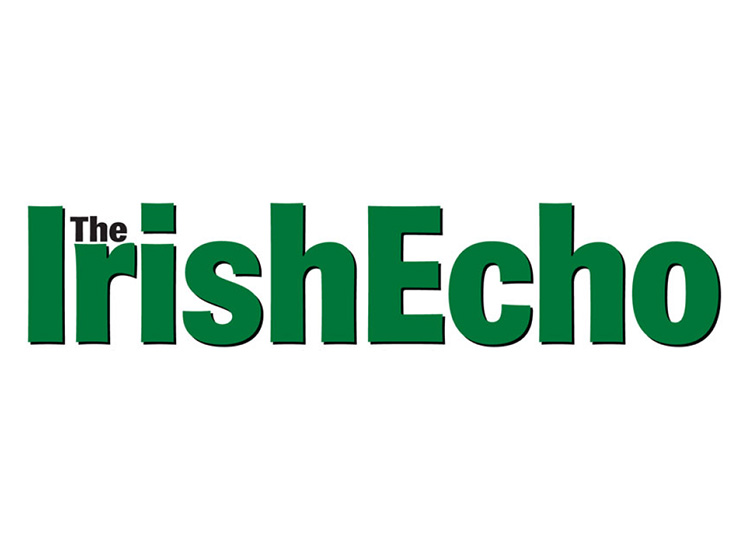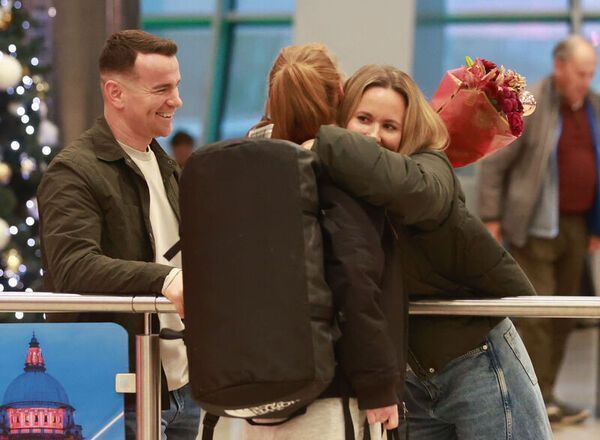Originally published in the March 10-16, 2004, edition of the Irish Echo.
By Peter McDermott
When it's time to close the Irish Jewish Museum in Dublin, curator Raphael Siev performs certain rituals. The retired civil servant, for example, climbs a stepladder outside the front door at 3 Walworth Rd. and takes the tricolor down from the flagpole. He’s on familiar territory here in Portobello, beside the Grand Canal. He’s known this building since childhood when his family started going to the synagogue there, after the smaller one they attended folded.
In 1912, the Walworth Road Hebrew Congregation joined together two modest red-bricked terraced houses built in 1870. Services took place until 1970 on the upper level, which had been restored for visitors to see.
The ground floor was a community meeting place, which now houses the museum’s large collection, displayed thematically in tall glass cases. In an alcove there’s a preserved kitchen with the original 1870 stone floor and fire place. Subsequent layers, such as the sink and the two sets of presses to facilitate kosher cooking, were added long before Siev’s time.
“It’s important to show there was a vibrant, active and integrated Jewish community who put down roots here, who became part and parcel of Irish life,” he said. “We’ve played our role — this is what the museum is showing.”
It’s not that difficult to get to Portobello. About a mile south of Dame Street and the Temple Bar district, one must negotiate Kelly’s Corner, a confluence of streets that has been transformed more than any patch of the city by the frenzy of building of recent years. Tall 21st century glass and concrete structures rise above the streets that twist and turn for reasons long forgotten.
However, off to the right is a boulevard, Harrington Street, extending into the South Circular Road up to Leonard’s Corner, that has remained largely the same for decades, other than the great diversity of its pedestrians.
Most immigrants are probably unaware of Portobello’s previous experience with multiculturalism, when Catholics, Protestants and Jews coexisted for generations. Siev reeled off the locations of the smaller synagogues: Haytesbury Street, Camden Street, Bloomfield Avenue, Oakfield Place. His own family went to Lombard Street West. There was one in an attic on Lennox Street, another in a backroom on St. Kevin’s Parade. “Joyce mentions several of them in ‘Ulysses,’ ” he said.
The right turn at Leonard’s Corner leads into Lower Clanbrassil Street, “Little Jerusalem,” the famous commercial heart of the Jewish community in Dublin, and the beginning of a back route into the city center, via the Liberties and the city’s great medieval cathedrals, Christ’s Church and St. Patrick’s Street. There were Jewish grocers, butchers, dairies, drapers, shoemakers, delicatessens, tobacconists, bakers, liquor stores and others.
“It was a great center of activity every day except Saturday,” Siev remembered.
Joyce had his hero Leopold Bloom born a few yards in the other direction, on Upper Clanbrassil Street, which was never particularly Jewish. In any case, his year of birth is placed some time before immigrants were identified with the neighborhood. But nobody’s complaining, not least the museum at Walworth Road, which proudly devotes one glass case to one of literature’s most famous Irishmen, who is also one its most famous Jews.
Russian Pogrom
There were 341 Jews in Ireland, according to the census of 1861, presumably of Central and Western European origin. But most Irish Jews, who came later, like most American Jews, were Yiddish speakers from the Pale of Settlement, that part of Greater Russia, including Lithuania and much of Poland, to which they were confined.
The assassination of Czar Alexander II in 1881 was followed by ferocious state-directed pogroms against the Jewish people, which in turn sparked a decades-long migration westward.
The overwhelming majority landed in North America, but at least 0.1 percent of the new Diaspora made their home in Ireland, and the Jewish population of the country increased tenfold within the space of a few years. Among them were Raphael Siev’s Lithuanian-born maternal grandparents, who settled in Limerick before the turn of the century. In that city, a series of lurid and bigoted sermons by a Redemptorist priest the Rev. John Creagh, beginning on Jan. 18, 1904, set off the worst anti-Semitic episode in Irish history. Though there were some assaults on people, causing serious injury, it’s best known for the economic impact on the Jewish people.
“The full effect of that was that most of the Jewish people living in Limerick, only about 30 families, were impoverished because there was an absolute boycott,” Siev said.
“They had to live on charity sent in from Dublin, England and America. The vast majority left. But my mother’s parents decided to stick it out. They lived through difficult times, but stayed until the 1920s.”
A few more immigrant families took a chance on Limerick, so they weren’t alone. “The boats were still coming,” he said.
Siev’s father was born in Liverpool, spent his teenage years in Drogheda, Co. Louth, and moved to work in Dublin by his early 20s, in the years before the World War I. “He was in recycling, which is very fashionable today,” he said.
Albert Siev had a wheelbarrow and went around six mornings a week to pubs and cafes, where he collected whiskey bottles, beer bottles, Guinness bottles and jam jars. “He would bring them to a small garage he had in Summerhill [in the north inner city] and he would wash them and sort them, put them onto trays,” his son said. And he sold them back to Guinness’s and the other breweries, the distilleries, Fruitfield jam company and other factories.
On his rounds with his wheelbarrow on Easter Monday, 1916, Albert Siev, stood amazed like other passers-by who’d stopped outside Liberty Hall, headquarters of the Irish Transport and General Workers’ Union, as a contingent of the Irish Citizen Army announced its revolutionary intentions before walking up to join the Irish Volunteers at the GPO. Among the Citizen Army’s ranks that day was one J. Weeks, who was Jewish. He died in the fighting a few days later.
Albert Siev moved in time into trading secondhand furniture. The family settled on Emorville Avenue, off the South Circular Road. There were no incidents equivalent to the events in Limerick and community relations were harmonious, on the surface at least. However, Siev’s childhood and youth, coinciding in part with the war years, was not free of anti-Semitism. He was hit more than once. And, on occasion, pupils from the Jewish day school, who learned their subjects through the Irish language, were attacked by stone-throwing boys their own age. “I was told I was a ‘dirty Jew,’ ‘go back to you where you came from,’ ‘you don’t belong here,’ ” he recalled. “They were just repeating what their elders were saying and thinking.”
For Siev, this hostility was reflected at the official level. “Not one Jewish person was admitted into Ireland between 1933, when Hitler came to power, and 1939, when immigration had to cease from mainland Europe,” he said.
He referred to two examples of the policy, which the museum documents. In one, the minister turned down a plea from refugee groups in Geneva for Ireland to accept some leading engineers.
“These were top engineers, who would have been of benefit to any country that wanted to establish industry,” Siev said. “We lost great opportunities in this country.”
The other concerned a man who owned a hat factory. “He was allowed to stay, his wife was sent back to Paris,” he said. “She was caught [by the Nazis].”
He added: “It’s unbelievable that even a partner of a man who was allowed to open a factory here, ran it through the war, and he lost his wife. It boggles the mind that this policy was so rigid.”
Rise and decline
It was in the years after the war that the Jewish community reached its peak in population, 5,500. Many Jewish families saw their economic situation improve from generation to generation. The immigrant might be a peddler, his son would own a small store, and his grandsons would be groomed for the professions. “That’s the way with all migrant communities,” Siev said.
The 1950s saw an Irish Jew become more famous, at least for a time, than Leopold Bloom. Bob Briscoe was appointed lord mayor by his fellow members of Dublin Corporation in 1956.
Ben Briscoe, who inherited his father’s Fianna Fail seat, in the Irish fashion, was joined by two co-religionists in the Dail in the early 1980s: Alan Shatter of Fine Gael and the Labor Party’s Mervyn Taylor. The community seems particularly proud of the popular, mild-mannered Taylor, who reached cabinet rank, serving as minister of equality and law reform between 1994 and 1997.
But many families, the Sievs among them, would not see fourth and fifth generations staying in Ireland. Raphael Siev became a lawyer, working for most of his career in the Department of Foreign Affairs, mainly at home in Dublin, but also serving abroad for a five-year period, as deputy head of mission in Copenhagen in the early 1980s. Now he and his brother Stanley are the end of the line.
The reasons for the terminal decline have been debated endlessly. There were recriminations and soul-searching: had the elders done enough to keep the young people in Ireland? Siev himself believes that the message that the state he loyally served gave the wrong message at a crucial moment in its history. Others argued it was difficult for a small religious minority to feel fully at home in a country where identity was wrapped up with the Catholic religion and the soil. And that it was easier to be religiously observant in bigger communities in Britain and America. While some said it was just another Irish immigrant story: there were better opportunities elsewhere.
In time, Jewish Clanbrassil Street, the emotional center of the community’s experience in Ireland, disappeared slowly, store by store. The last butcher’s shop, Ehrlich’s, was kept afloat for years by the Jewish Representative Council until it closed in 2001. The street in any case had been widened in the 1980s and bore little resemblance to what was once there. There are just 1,000 Jews now in Dublin. And as Ireland attracts immigrants and temporary workers from every continent, the Irish-Jewish story has become something of a curiosity.
On a recent winter afternoon, there was no shortage of visitors making their way to Siev’s door. Among them were two German-American sisters from the Midwest, with grown children in tow. One of the women converted to Judaism after she married. A Chinese man, visiting with his wife, reminded Siev that his home city of Shanghai was a refuge for many European Jews fleeing the Nazis. All were impressed with what they saw at Walworth Road.
Siev has been moving force behind the museum since the idea was first mentioned 30 years ago. He was a strong supporter of turning the old synagogue into a museum. It might not have seemed the ideal project to put to a community already a little traumatized by its decline. But Siev was determined. And he cooperated with another man, Asher Benson, who was also building a collection.
Silja Mueller, a non-Jewish Swiss-born woman, who volunteers once a week at the museum, hinted at one reason for its success. She initially went to Walworth Road to research an acting role. When her work was done, and she was leaving, apparently for the last time, Siev said to her: “You’ll be back next Sunday?” She did come back. “Raphael can be very persuasive,” she said.
(Admission to the Irish Jewish Museum is free. It is open Sundays, Tuesdays and Thursdays from 11 a.m. to 3:30 p.m. from May 1 through Sept. 30. From Oct. 1 through Apil 30 it is opens Sundays only from 10:30 a.m. to 2:30 p.m.)







